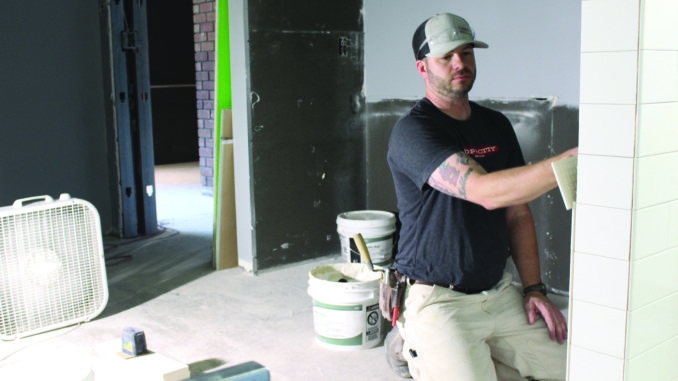
By Brian Ruth
The Scene staff
Students, faculty and staff returning to Forest Park in the fall will notice changes, from the return of the graphics program to a reorganization of academic deans.
Those changes, as well as campus beautification efforts, are designed to create a better student experience at the college.
Deans reorganized
Forest Park departments have been reorganized under three deans: Debra Harper-LeBlanc over Arts and Communications and Human Services; Julie Frickas over Science and Science Technology and Business and Management; and William Hubble over Health Sciences.
This is designed to put the same type of classes under one dean on each of the four St. Louis Community College campuses.
“In our former structure, you could go to any different campus, and you may see certain aspects of the same department split between two academic deans,” Provost Larry Johnson said. “I think it made things confusing for students and our faculty.”
The reorganization was recommended by the Academic Affairs Restructure Focus Group, the same body that recommended the replacement of campus presidents with provosts more than a year ago.
“It does not have any budgetary implications,” Johnson said. “The main reason is to streamline our academic functions.”
Graphics returning
Forest Park had a full graphic-design program until 2010, when the district decided to split it with Meramec. The former offered beginner classes and the latter offered advanced classes, so students had to travel to both campuses to complete their degrees.
“This fall, we got the whole program back,” adjunct instructor James Bruenger said. “It’s going to be a challenge to start off, so we are starting it off slow with advanced classes in the fall and more of the full-program classes in the spring.”
New graphics classes scheduled to start this fall are Graphic Design III and IV and a computer-aided illustration class.
History of Graphic Communications now will be a requirement for the associate’s of fine arts degree; it used to be an elective. Web-design classes also have been added to the graphic design option of the associate’s of applied science degree in fine arts.
TVs installed
Johnson worked with the facilities and IT departments last spring to install new flat-screen TV sets in the Student Center and gymnasium lobby.
The TVs will stay tuned to news, including local stations and national networks, at all times.
“The purpose is to engage students in what is taking place throughout the nation,” Johnson said.
Campus spruced up
The facilities department has been cleaning outside and adding landscaping, removing wall graffiti in restrooms and replacing carpet on the library’s main floor.
“Suggestions came to us about the grounds and restrooms,” Johnson said. “Students will notice we are being very conscientious about making sure we have a campus that is aesthetically pleasing.”
In addition, contractors have been hired to paint the sloped rooftops of the library and theater buildings.
“This all involves fostering student success by providing a better experience because if students like where they go to school, that increases the likelihood they will return,” Johnson said.
Cyber beefed up
The Center “4” Cybersecurity has created an online platform in which students enrolled in the program can practice their classroom skills.
Department chair Brenda Kahan said the Information Systems/Information Technology Club is planning fall events, such as PC hygiene days, a speaker series, technology exploration meetings and field trips to area IT facilities.
Two new classes will be offered, in addition to those required for compliance with industry standards and employer needs: Ethical Hacking and Systems Security Engineering.
Mass comm reaching out
The mass communications department is increasing its outreach to local high schools to educate students on the wide diversity of career options in the field.
“I talked to the provost a little bit about that, and he seems really excited about having faculty out there meeting potential students,” said Kara Boyd, acting chair.
The department also is developing a crossover track involving public relations, advertising and graphic design for mass communications or fine arts students.
“I want the students to get a good taste of the field that is out there, but also it’s important that we have a strong reputation, so that when these students move on to a four-year university, I want those colleges to say, ‘This is a Forest Park student. We know they were in good hands,’” Boyd said.
One way students can expose themselves to crossover study before the official track is offered is to enroll in two hybrid courses: Introduction to Advertising and Public Relations.
Both will be late-start classes, and they will be offered back to back on the same days.
“For students who take them together, it will be an easier flow for them,” Boyd said.
